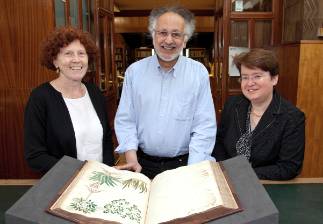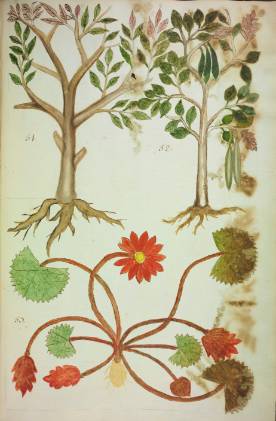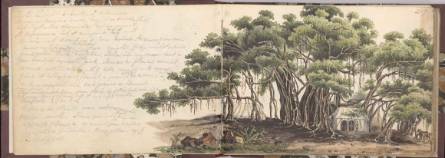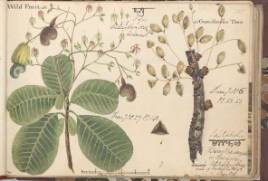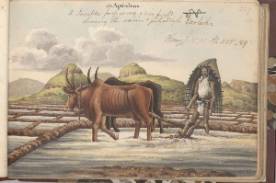Professor Kapil Raj of the L'École des hautes études en sciences sociales (EHESS),
is an eminent historian of intercultural encounters and the making of modern science. He has been conducting a three month review of South Asian natural history drawing collections held at the Natural History Museum, London, (NHM), the Royal Botanic Gardens, Kew (RBGK) and the British Library (BL) as part of The World Collections Programme (WCP) funded project, Wallich and Indian Natural History.
Judith Magee (Special Collections Curator), Prof. Kapil Raj and Julie Harvey (Centre Manager, CAHR)
Wallich and Indian Natural History focuses on the dispersed collections of Nathaniel Wallich (1785–1854), Superintendent of the Calcutta Botanical Garden for the East India Company from 1817 to 1846. Through research and digitisation, the project reunites Wallich’s dispersed collections from the holdings of the project partners. A significant strand of project activity is the survey of collateral South Asian natural history drawing collections held at the partner institutions.
Hosted by the Centre for Arts and Humanities Research (CAHR) Kapil has worked with the Library Special Collections Curator and Library staff to study key botanical and zoological watercolour collections from 1690-1900. Assessing and quantifying the richness and inter-connectivity of these historically and scientifically important collections, Kapil has identified many individual artworks and collections for further research.
These works represent the desire of private individuals and of the East India Company to collect, classify and exploit the natural resources of the region.
The South Asian natural history collections housed in the NHM Library are rich and diverse in content. Each collection has a unique and fascinating history which encompasses its creation, the artists and their methodologies, subsequent ownership, use and exploitation, curatorial methods and conservation.
Through the survey, Kapil has been fascinated to discover the range of subjects depicted: not only flora and fauna, but insects and fish - a very comprehensive natural history of South Asia, dating from the eighteenth to the twentieth century. This is important not only for the history of science and art, but also of cultural encounters.
Hortus Malabaricus
A significant highlight is a Banksian manuscript containing 228 watercolour drawings: Hortus Malabaricus. A beautiful eighteenth century Portuguese text depicting Indian plants and their medicinal properties with recipes for curing various ailments. It was given the title Hortus Malabaricus by museum curators; the true title, ‘Declaracao da aruores...Plantas’ and the rest of the text will be translated from Portuguese to enable a better understanding of this intriguing manuscript.
A volume from the Sykes collection
The William Sykes material discovered in the Library Special Collections contains beautiful illustrations and fascinating insights into the history of agriculture in India.
An exxample of two pages from the Sykes collection
William Sykes (1790-1872) had a successful career in the East India Company army: arriving in India in 1804, and rising to Lieutenant Colonel by 1831. In 1824 he was appointed statistical reporter for the Bombay Government, and charged with conducting a statistical survey of the Decan region. Sykes spent seven years travelling through India, observing and collecting information which resulted in a report including information on the flora and fauna of the region, as well as agricultural implements and practices. Travelling with Sykes was a young Bombardier from the Bombay Artillery, Llewellyn Fidlor, who had been assigned to Sykes as his draughtsman and artist. Fidlor produced some beautiful drawings to accompany the report.
These twenty one volumes of text and illustrations form the perfect collection for further work.



